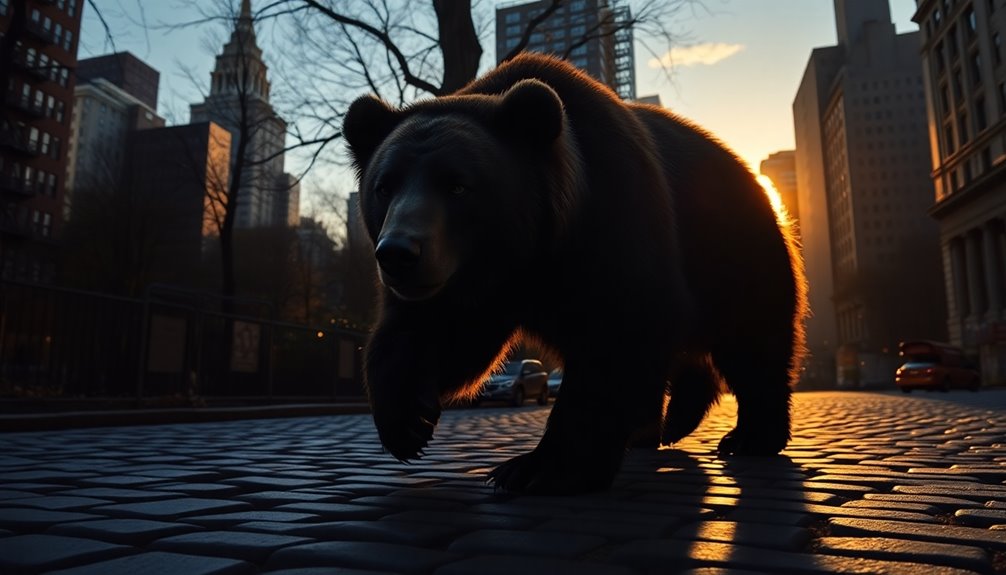Imagine a time in the early 1700s when a wild bear roamed the streets of London, captivating crowds and reflecting the economic climate. This bear, with its fierce demeanor, became a symbol of market decline, contrasting sharply with the optimistic bull. But how did this animal inspire one of the most foreboding terms in finance? The story behind the bear market is both fascinating and revealing. Let's explore its origins together.

While most people associate Wall Street with wealth and opportunity, the terms "bull" and "bear" reveal a more complex narrative steeped in history. You might think these terms are specific to the U.S. stock market, but they actually trace their origins back to London in the early 1700s. Initially, they weren't even related to financial markets. Over time, however, they've come to symbolize rising and falling stock prices, representing investor sentiment and market dynamics.
When you hear about a bull market, it signifies a period characterized by rising stock prices and rampant investor optimism. You might feel the excitement in the air when the market is booming, with investors confidently buying into the trend.
On the flip side, bear markets are a different story. They signify a decline in stock prices, often linked to economic recessions and rising unemployment. You can't ignore the historical context here; significant bear markets, like those during the Great Depression and the 2008 Great Recession, have left deep scars on the economy. Even the recent bear market triggered by the COVID-19 pandemic in March 2020 serves as a stark reminder of the volatility inherent in investing. The Charging Bull sculpture symbolizes the positive outlook of investors, reinforcing the connection between these market terms and their representation in public art.
Yet, bear markets aren't just about despair. They can also present unique opportunities for savvy investors. When stock prices fall, you might find yourself in a position to buy shares at lower prices, setting the stage for future gains when the market eventually rebounds. The recovery following the 2020 bear market showcased just how quickly things can turn around, highlighting resilience in the face of adversity.
Symbolically, the bull and bear represent the dual nature of financial markets: optimism and pessimism. You've likely seen the iconic Charging Bull statue in New York City, embodying market optimism. These symbols have seeped into popular culture, frequently appearing in media to describe current market conditions. Their global recognition speaks volumes about their importance in financial discussions.
Historically, the definitions of bull and bear markets have evolved. They've shifted from describing short-term fluctuations to more precise definitions, with a bear market typically defined as a 20% decline from recent highs.
As you navigate the world of investing, understanding this extraordinary backstory can deepen your appreciation for the complexities of Wall Street and its most ominous terms.










